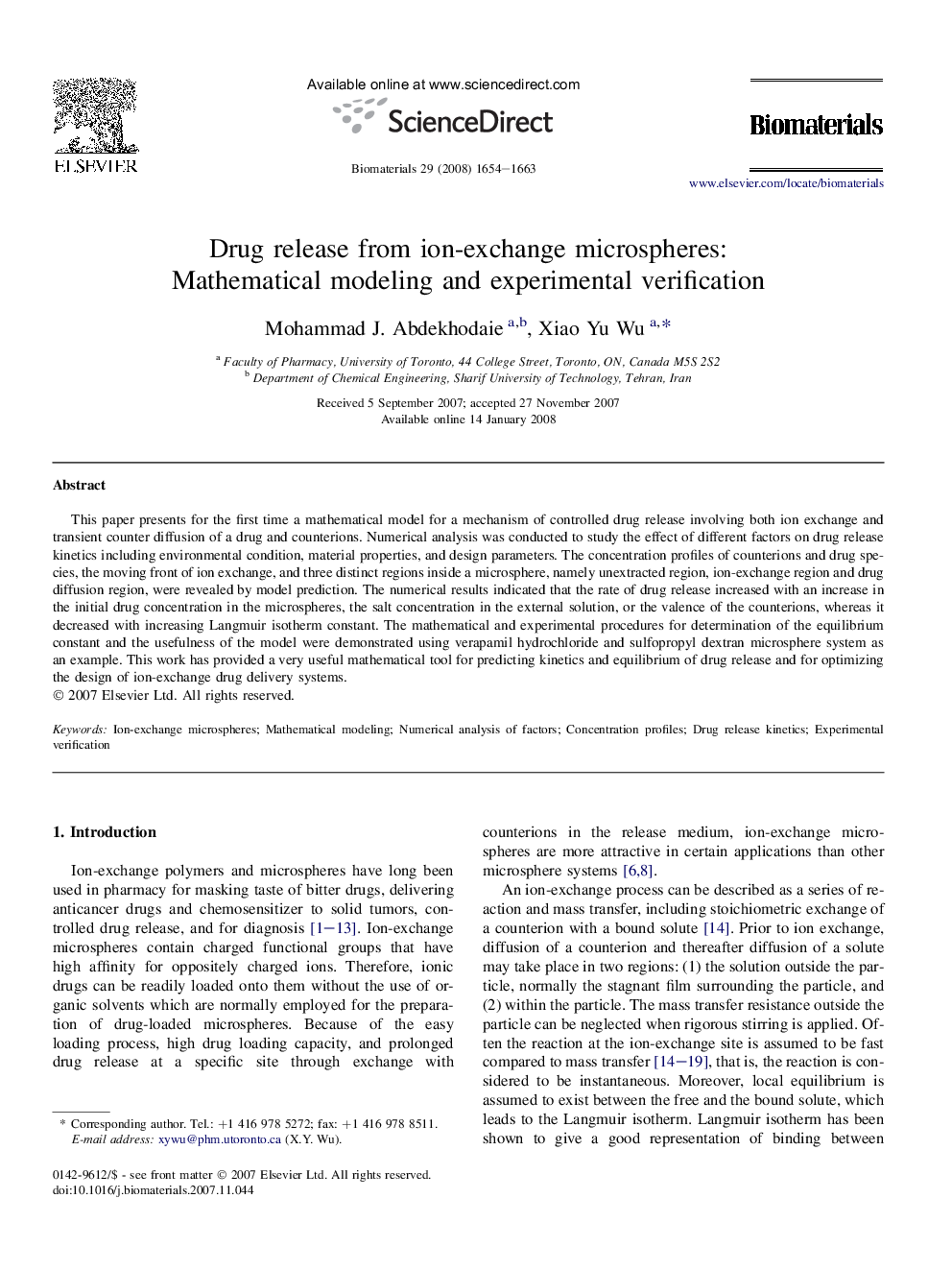| Article ID | Journal | Published Year | Pages | File Type |
|---|---|---|---|---|
| 10620 | Biomaterials | 2008 | 10 Pages |
This paper presents for the first time a mathematical model for a mechanism of controlled drug release involving both ion exchange and transient counter diffusion of a drug and counterions. Numerical analysis was conducted to study the effect of different factors on drug release kinetics including environmental condition, material properties, and design parameters. The concentration profiles of counterions and drug species, the moving front of ion exchange, and three distinct regions inside a microsphere, namely unextracted region, ion-exchange region and drug diffusion region, were revealed by model prediction. The numerical results indicated that the rate of drug release increased with an increase in the initial drug concentration in the microspheres, the salt concentration in the external solution, or the valence of the counterions, whereas it decreased with increasing Langmuir isotherm constant. The mathematical and experimental procedures for determination of the equilibrium constant and the usefulness of the model were demonstrated using verapamil hydrochloride and sulfopropyl dextran microsphere system as an example. This work has provided a very useful mathematical tool for predicting kinetics and equilibrium of drug release and for optimizing the design of ion-exchange drug delivery systems.
